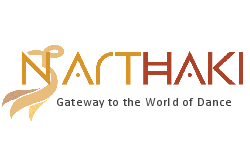
|   |

|   |
Rasamagna by Natyanova- Tapati Chowdhuriee-mail: tapatichow@yahoo.co.in Photos: Smita June 21, 2025 Rasamagna was presented by Natyanova on 9th June at Gyan Manch, Kolkata. Aficionados of dance were served with an agglomeration of various traditional dance forms of India. 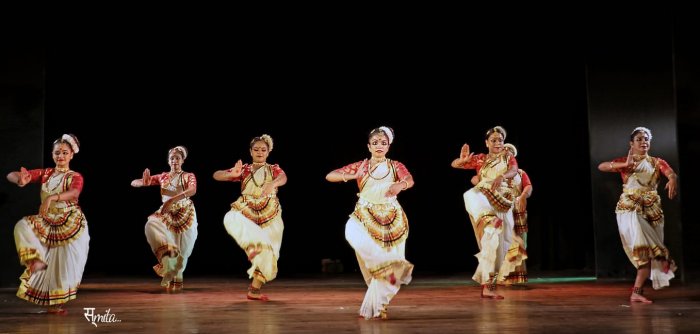 Natyanova ensemble Priyadarshini Ghosh, the artistic director of Natyanova, a Mohiniyattam and contemporary dance performer, and Mohana Iyer, its repertory director, versed in Mohiniyattam, Bharatanatyam and Kathakali, flagged off the evening with an invocation to Ananda Ganapathy composed by Kavalam Narayana Panicker. The performance beautifully set the tone for the evening, showcasing the intricate footwork and expressive gestures that are hallmarks of these classical forms. As the dancers took to the stage, the audience was transported into a world of rhythm and grace, celebrating the rich tapestry of India's cultural heritage. He who swings his trunk and shakes his single tusk in the joy of dancing has to be appeased to ward off obstruction - at least that is what believers say. The seeker begs the lord for mercy. Beauty is in the eye of the beholder. So the beatific smile of Ganapathy has a mesmerising effect on the devotees. As the elephant-headed god - the son of Shiva and Parvati - is adept at both the tandava and lasya elements of dance, they were incorporated in the choreographic work. The melodic beauty of Puraneera ragam by Lakshmi Narayanswamy in Sopana Sangeetam of Kerala was most pleasing to music lovers. Priyadarshini Ghosh kept the talam/rhythm. Mridangam artiste Shankar Narayanaswamy, edakka player Kalamandalam Gopa Kumar, and flautist S. Harihardan together made up a fine team of accompanying musicians. Performers Sanjana Ghosh, Srijaini Ghosh, Sreeradha Ghosh, and Aastha Bhattacharya, Debanjali Bandhyopadhyay, Priyasmita Ghosh and Sampurna Mukherjee performed a pure piece of Mohiniyattam, making the choreographer Priyadarshini Ghosh proud. 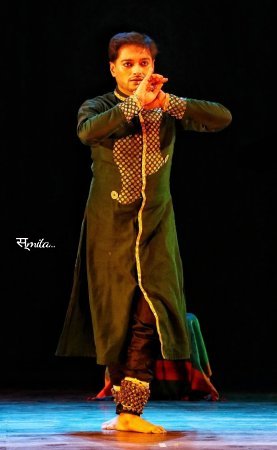 Souvik Chakraborty After savouring the fine presentation of Mohinyattam, Souvik Chakraborty's skill took the rasikas to a high level of artistic enjoyment of his Kathak presentation. 'Raag sang Ragini' was based on the rhythm cycle of 12 beats - an amalgamation of Saptasur, different fractions of the taal and Kathak bols proved that a Kathaka needs some kind of proficiency in math too. Chandrachur Bhattacharya, who was in charge of the music, did an excellent job. Bhav nritya "Sundar Shyam" had all the ingredients needed to make it attractive, like the nectar which brings out the subtle flavour of Kathak Nritya. The music matched the solo dance of Sourav's rendition. We, the audience, watched his every movement and savoured the rasa and felt the presence of Krishna, the cowherd boy, the lord of Radha, the cosmic dancer, the creator of rasa, in our hearts. He was an illusion. We seemed to feel his mystic touch, which is ultimate devotion or bhakti. Though a technical glitch had brought the music to a standstill, it was to be revived soon. Vocalist Prabhati Mukherjee was the life giver of the Thumri. The arrangement by Agnibha Bandyopadhyay was all the more aesthetic. Teen Taal Tarana, with its usual syllables "Dim tana dere na", with its intricate patterns and speed of footwork, with its numerous permutations and combinations of rhythmic phrases and graceful spins, was a kaleidoscope of changing formations. The disciples Poulami Basak, Aadita Sinha, Priyanka Pal, Sharanya Rana, Shayeri Ghosh Nandan, Sucharita Pal, Tiyasha Dey along with their mentor Souvik Chakraborty were electrifying, though they are still in the process of learning. 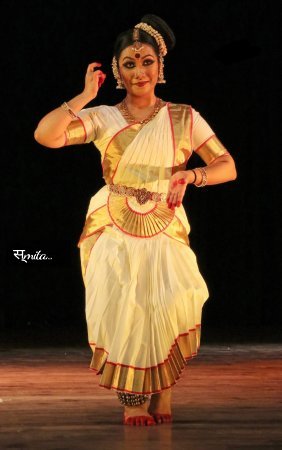 Malavika Menon The form Mohiniyattam conjures a whole lot of emotions. Mohini had prevented the asuras from partaking of Amrita and gaining immortality during the churning of the ocean. A Mohini charms but does not allure. Malavika Menon presented two pieces of this beautiful lasya form with grace. Costumed in the typical gold-bordered cream-coloured saree of Kerala, she was truly an epitome of Devi in Devistuti, followed by Kekiyattam. Both were the choreographic work of her guru, Vinitha Nedungadi. Devi was visualised as Prakriti, Mohini, Shumbha, Nishumbha, Nasakarini, Abhayadayini, Jagan Mohini, Ananda Rupini, etc., according to her manifestations, performing her eternal dance. In Nayaki, Devi represents the three fundamental aspects of the cosmic cycle: creation, preservation and destruction, which are constantly at play governing the existence and renewal of the universe. She is the one and only Ranganayaki to whom Malavika paid her obeisance to the beautiful strains of ragam Sree and misra chapu talam. Kekiyattam, or the dance of the peacock was on the much-loved monsoon and was a very popular Malayalam film song written by Kavalam Narayana Panikker. "Karukare Karmukil" speaks of the rain cloud, with metaphors rife with layers of meaning that can be interpreted in various ways. Malavika's interpretation was the joyous dance of the peacock in the monsoon showers. A peacock is the ultimate symbol of the rains. She was able to capture the gait of the peacock and the vigorous shaking of its body before spreading its wings. One could almost visualise the eye spots of its wings. Ragam Samantha Malahari and talam chathurasra ekam brought out the feel of the monsoon, symbolised by the movement of the peacock. 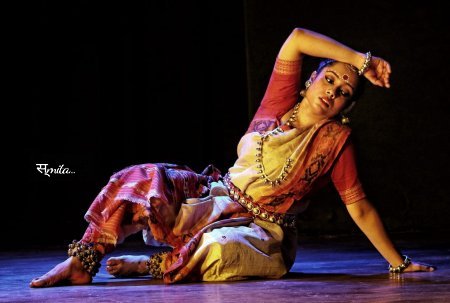 Rohini Banerjee Odissi exponent Sharmila Biswas, known for her innovations in her learnt genre, presented her student Rohini Banerjee. In Pallavi, she showcased the beauty of Odissi dance technique and elaborated on the intricacies in its stances and body movements through expansions of raga and tala. Every dance has a story to tell, even if it just weaves the steps together rhythmically to the music of a raga. Each movement has an expression which meaningfully leads on to the next. However abstract it may have been, Rohini's Pallavi did tell a story to be interpreted by the rasikas in their own way. Kundalika, which is one of humanity's most ancient and mysterious symbols, was influenced by spiral movements, as were Bhramaris, the circular movements that exist in all dance forms of the world. These movements by Rohini created a feeling of unending movements displaying body lines from all angles. "Kundalika" was conceptualized and choreographed by Guru Sharmila Biswas, while the music composition was by Subramani Ramesh Chandra, and rhythm composition and execution were by Buddhanath Swain. Srijan Chatterjee's voiceover added to its beauty. The choreography incorporated all the twenty-two circular movements in Odissi. The piece was didactic, displaying the innovations Sharmila Biswas stamped her genre with, which did not inject the well-known grace in the form that her guru, Kelucharan Mohapatra, was known for. Art is not static; it is mobile, like the ever-flowing river embracing changes. The second presentation was 'Krishna Janma Katha.' In Odisha, during Janmashtami, the episode of Krishna's birth is recited from the Bhagavat. Rohini Banerjee based the story of the birth of Krishna on the Srikrushna Janma written by Jagannath Das. The narrator single-handedly was able to keep the audience completely spellbound with the story. Traditionally, the narrator can go on for hours while he flits from one character to another, while at the same time he continues the narration. In this abhinaya piece, Sharmila Biswas had incorporated the use of various traditional chanting styles of Odisha. Music composition was by Prafulla Kar, while Dhaneswar Swain had taken care of the rhythm composition. In keeping with the tradition of Krishna Janma Katha of Odisha, there were glimpses of folk elements in the dance choreography. 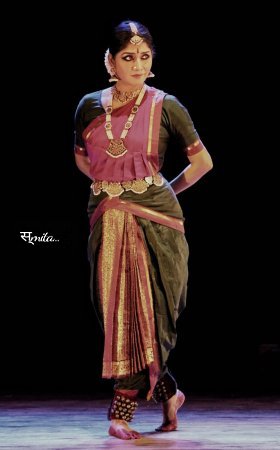 Jaya Seal Ghosh A Tyagaraja Kriti which has been reimagined as a Tillana with music composed by Sudha Raghuraman in ragam Hindolam and talam adi was presented by Bharatanatyam performer Jaya Seal Ghosh. The piece was choreographed by Rama Vaidyanathan. The lyrics in praise of Lord Rama's majestic walk were full of similes and metaphors translated skillfully in the language of dance. Tyagaraja's descriptions of the varied qualities of Vishnu's Avatars told through the medium of dance were much appreciated. The piece was a combo of Tillana and Keertanam. Thumri, based on verses by the mediaeval Ritikal poet Devdutt, woven in the thumri format, described Radha's dream of her meeting with Krishna amidst the Kadamba trees along the Yamuna River, which ended abruptly because she woke up. The thought that Krishna was not with her throws her in the labyrinth of contemplation. The poet's line penned in Brajbhasha, "Radhika Kanha ko dhyaan kare, tab Kanha ve gun gave," deepens Radhika's meditation on Krishna and makes her step into his shoes. In this transcendental state, she praises Radha as she imagines Krishna would. She even pens letters as Krishna, addressed to herself. She momentarily transforms into Krishna, only to return to herself again. The realization that she is a part of Krishna, and Krishna is within her, was the eureka moment subtly brought out through the power of Jaya's abhinaya.  Tapati Chowdhurie trained under Guru Gopinath in Madras and was briefly with International Centre for Kathakali in New Delhi. Presently, she is a freelance writer on the performing arts. She is the author of 'Guru Gopinath: The Making of a Legend.' |